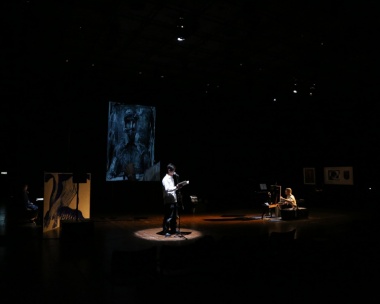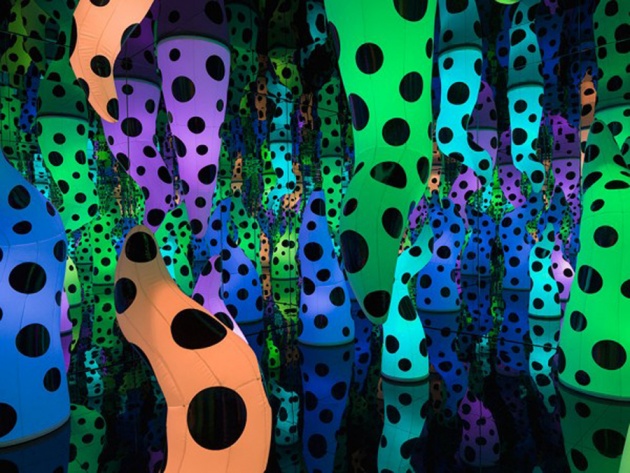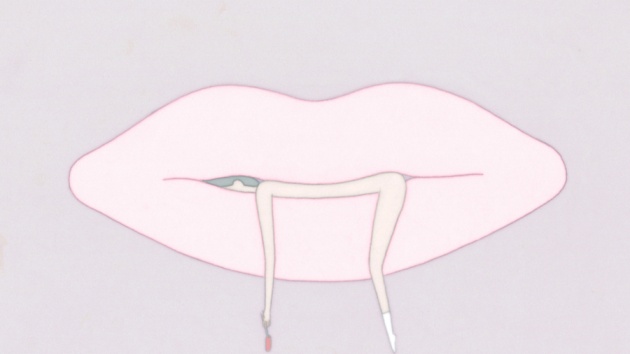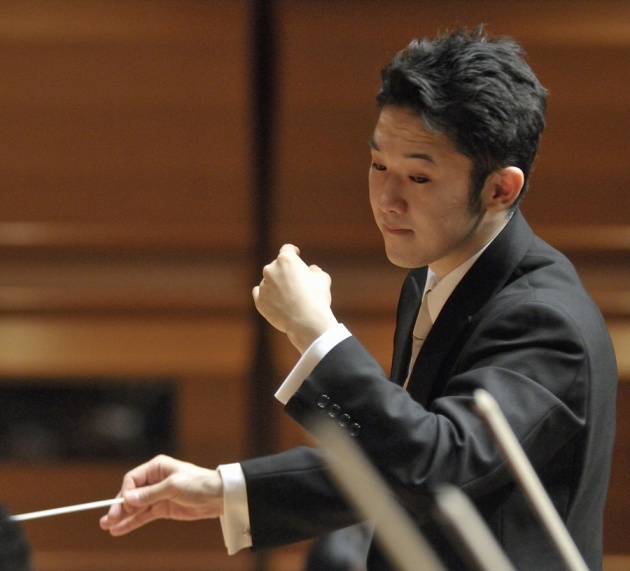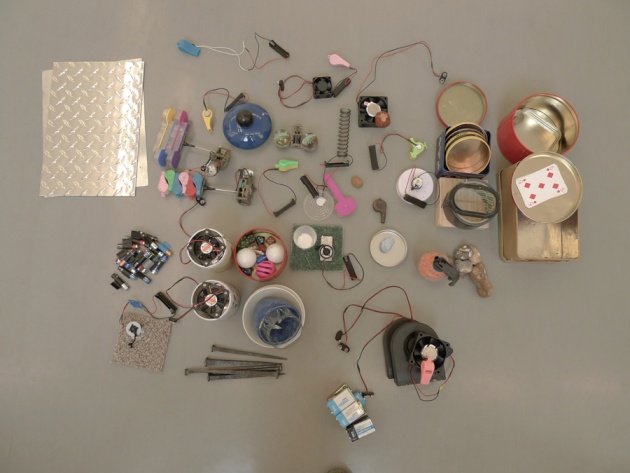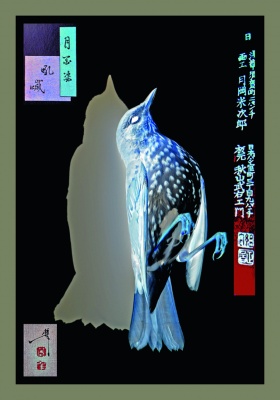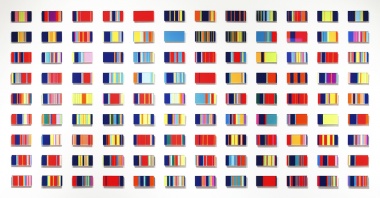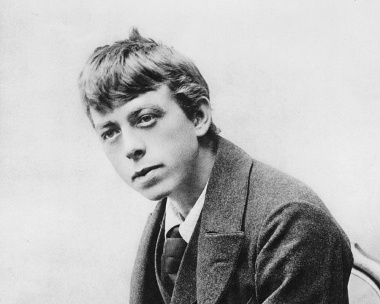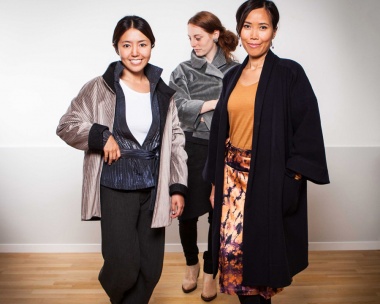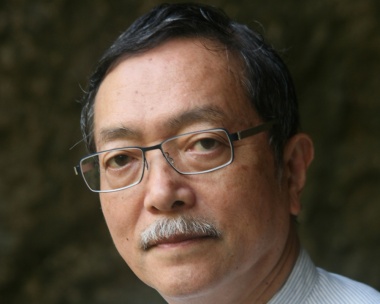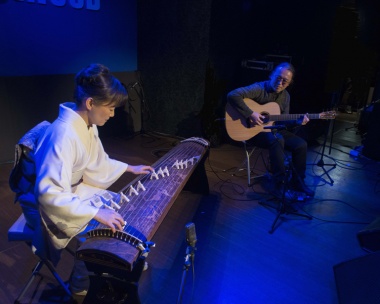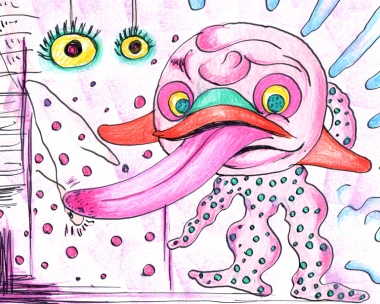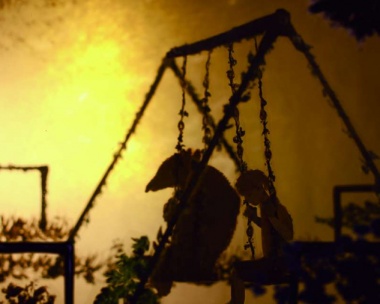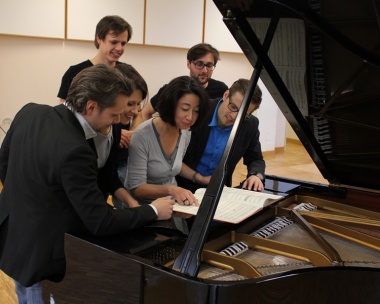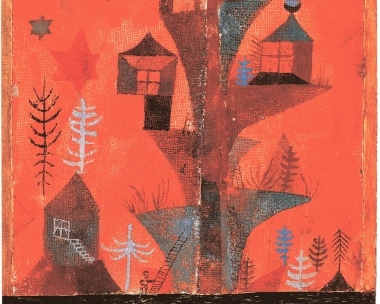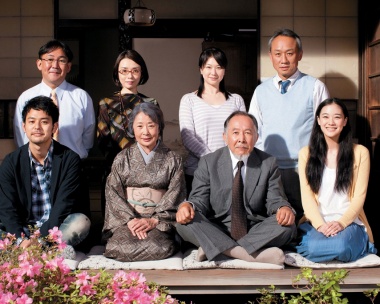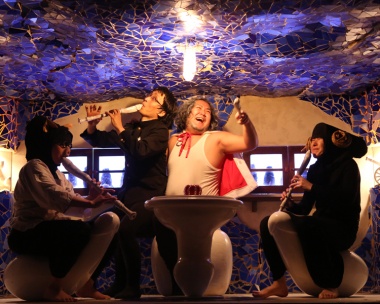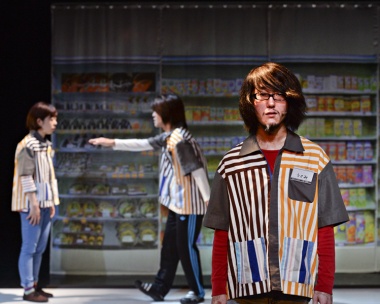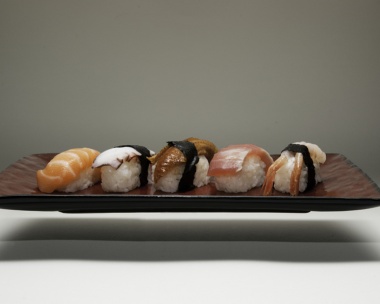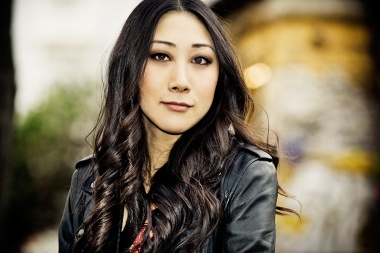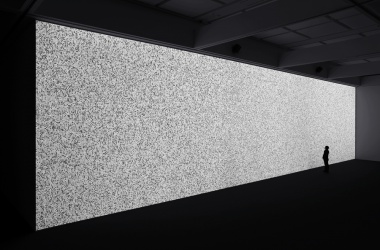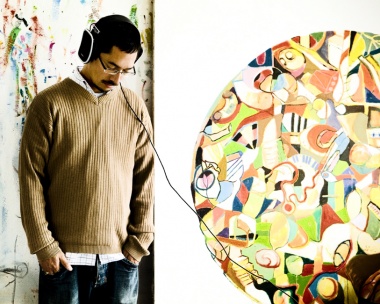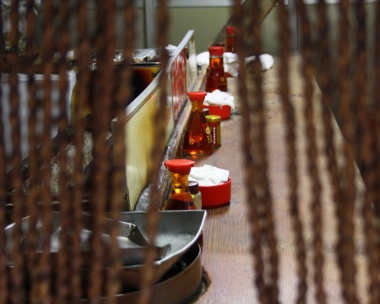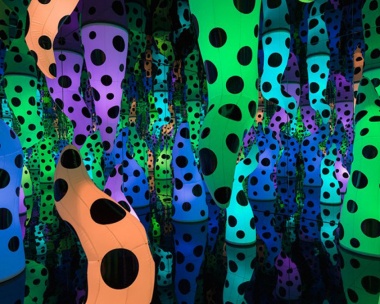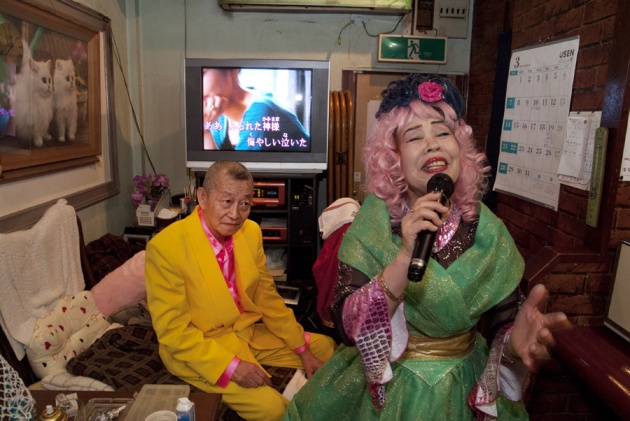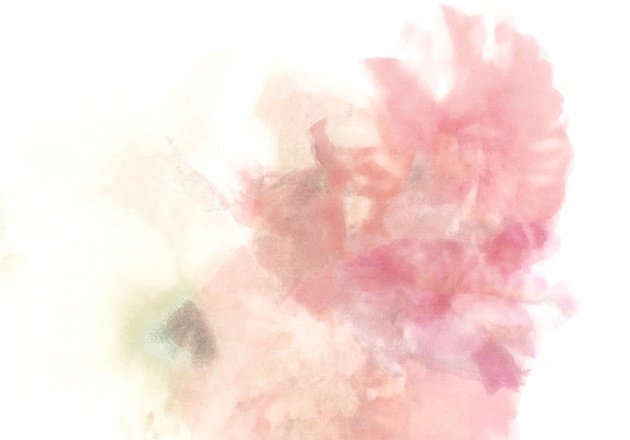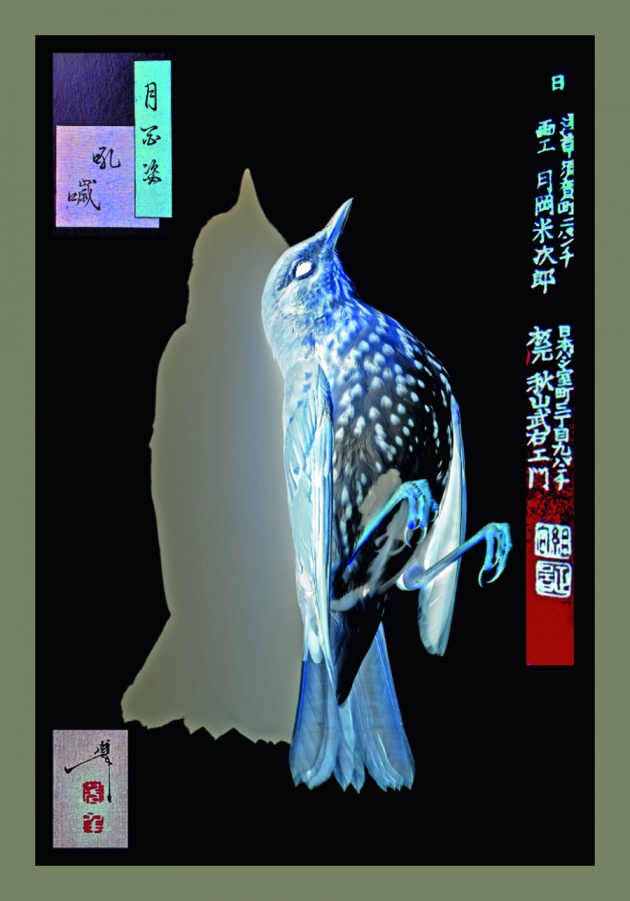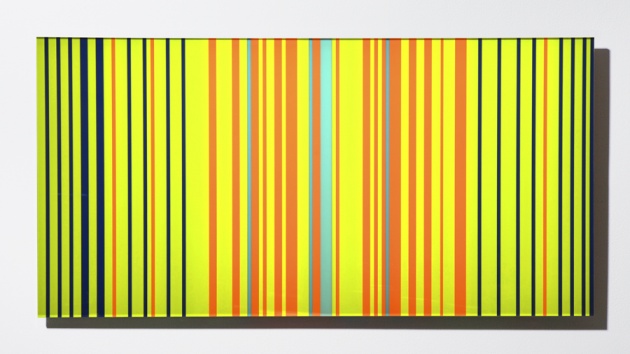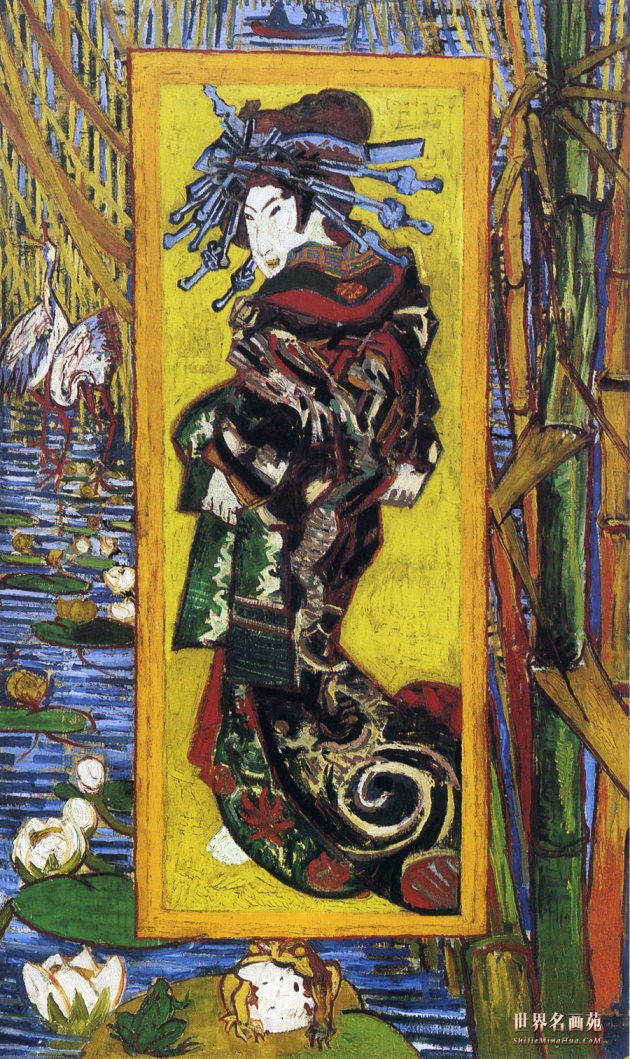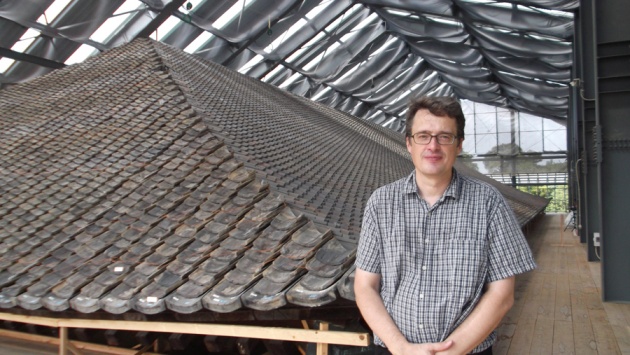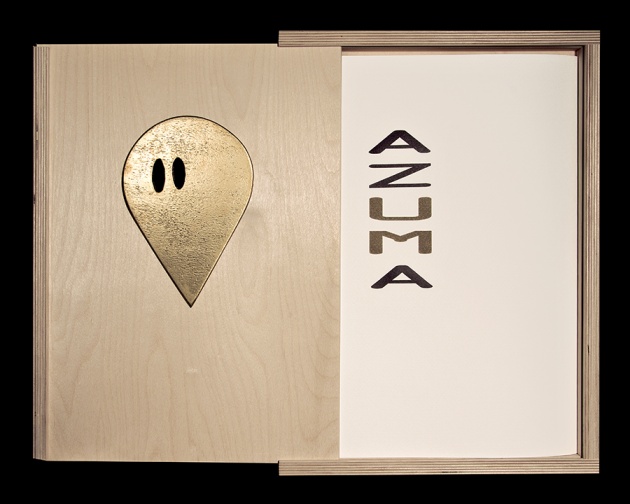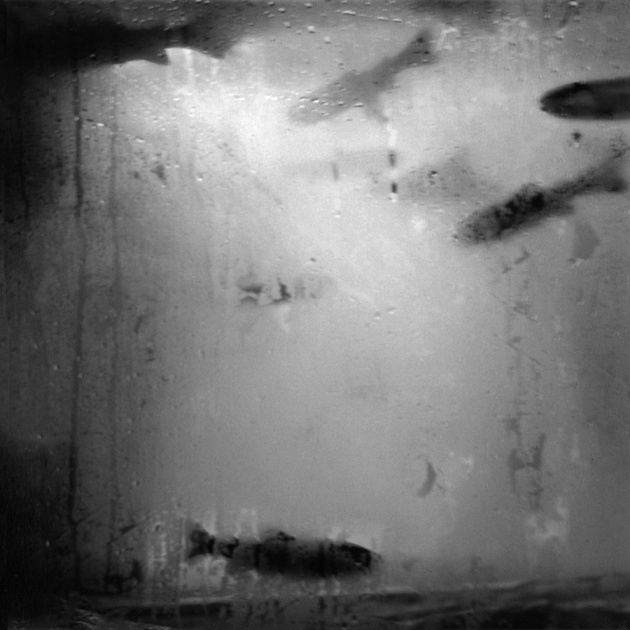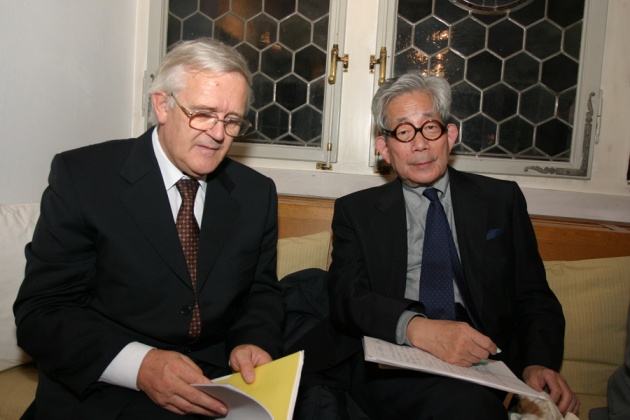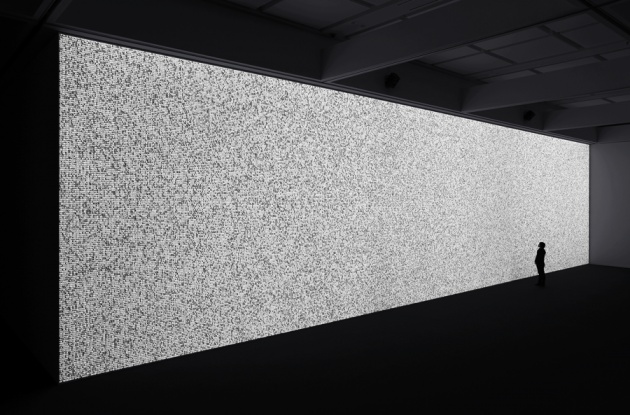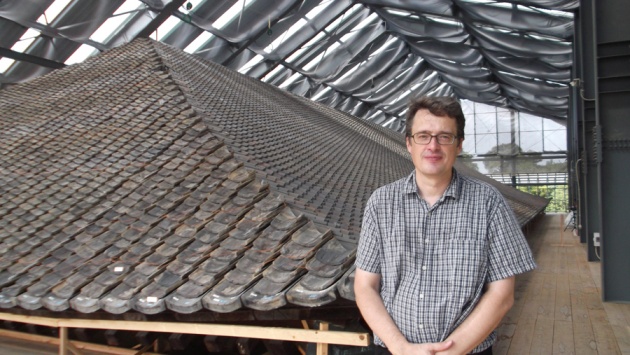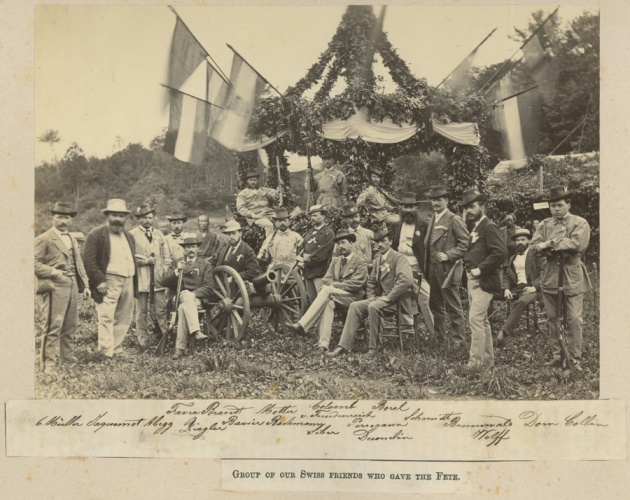Father and son: an old and a young man who no longer share the same world, as the father is starting to show signs of dementia. When the son decides to look after his father he also becomes part of his fictitious reality. The former painter generally believes he is Alberto Giacometti, who he greatly admired when he was young. His son is left to play the Japanese exchange student Isaku Yanaihara, who once worked in Giacometti’s studio. In this role, the son is forced to pose for his father day in, day out, and has to make use of a dictionary to understand his father as he mumbles away in his best school French. One day the son comes across Isaku Yanaihara’s published diary ‹With Giacometti› and suddenly realises that his father’s words are all quotations from the book. To be able to communicate with his father, the son begins to learn Yanaihara’s words by heart as his text in the role play. A weird, theatrical relationship between father and son begins.
This was the initial set-out for the play. During the rehearsal process - which is always a creative process in the group Akumanoshirushi's case - a self-reflexive performance evolved. The family project, in which not only father and son, but also the mother is involved backstage, discusses themes such as identity, family ties, aging and the generation gap, but also conditions of creativity and art.
The director Noriyuki Kiguchi (born in 1975) is an architect, a construction worker and an artist who gained his first experience of theatre productions as a student at the University of Yokohama. His works focus on social processes and personal experiences, while explicitly confronting the spatial conditions in which they take place.
Writer and director: Noriyuki Kiguchi, based on ‹Giacometti› and ‹Giacometti Diaries› by Isaku Yanaihara (1996, 2010, Misuzu Shobo, Ltd.)
Actors: Keizo Kiguchi, Noriyuki Kiguchi, Hikaru Otani
Video: Yu Araki
Music: Umitaro Abe
Lighting Design: Makoto Ooshima (KAAT Kanagawa Arts Theatre)
Sound Design: Yasutaka Kobayakawa (Swiss tour, Kyoto Experiment), Minoru Motomura (KAAT Kanagawa Arts Theatre; Premier, Yokohama)
Subtitle Operation: Keiko Kiguchi
Stage Management: Megumi Sato
Graphic Design: Yasuwo Miyamura
Production Assistant: Asami Hori
Production Management: Akumanoshirushi, Takio Okamura (Okamura & Company), Ayumu Sawafuji (KAAT Kanagawa Arts Theatre)
Co-Production: KAAT Kanagawa Arts Theatre, Kyoto Experiment
Co-produced by: Akumanoshirushi & KAAT Kanagawa Arts Theatre
Supported by: The Saison Foundation, Asahi Group Arts Foundation, Arts Council Tokyo, The Japan Foundation
In Japanese with German subtitles (in Bellinzona Italian subtitles), running time 70 min.
Hier some trailers:
Trailer ATELIER VERSION (© Yu Akari)
Trailer LIVING ROOM VERSION (© Yu Akari)
FILM IMPRESSION of the performance
